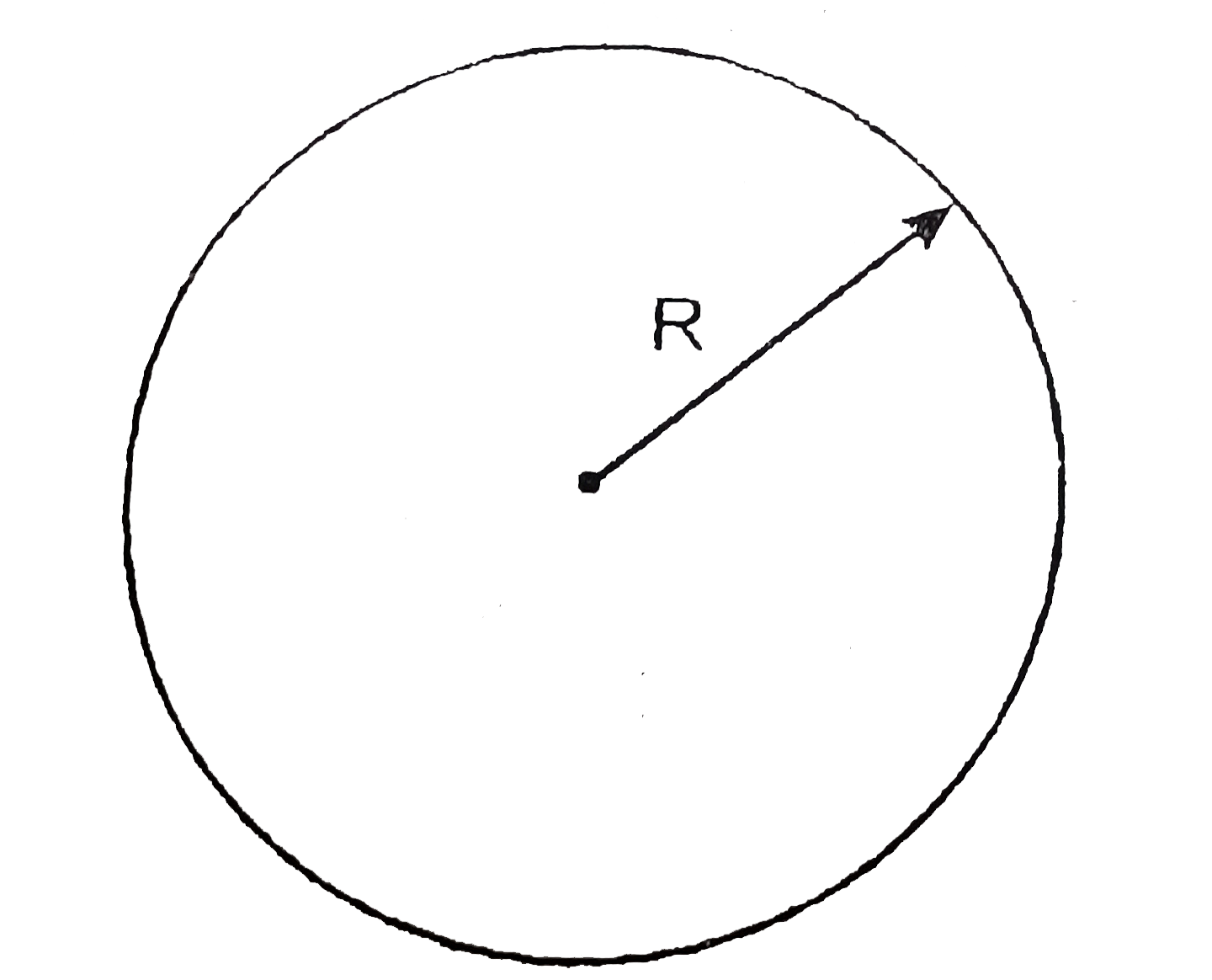A silver of radius 1cm and work function 4.7eV is suspended from an insulating thread in freepace. It is under continuous illumination of 200nm wavelength light. As photoelectron are emitted the sphere gas charged and acquired a potential . The maximum number of photoelectron emitted from the sphere is A×10e(where1<A<10) The value of z is
The correct Answer is:7
R=1cm
f=4.7cm
hcλ=ϕ+eV
1240(ev)(nm)200(nm)=4.7(eV)+eV
(1240)(200)e=4.7e+eV
6.2−4.7=V∴V=1.5 volt
14π∈0QR=1.5
(9×109)Ne1100=1.5

9×1011Ne=1.5, N=1.59×1011×1.6×10−19=1516×19×108
=53×16×108=5048×107
∴Z=7
Topper's Solved these Questions
- ATOMIC PHYSICSBOOK - RESONANCECHAPTER - ATOMIC PHYSICSEXERCISE - Advanved level problems
17 Videos
- ATOMIC PHYSICSBOOK - RESONANCECHAPTER - ATOMIC PHYSICSEXERCISE - Exercise-2 Part-III : Comprehension
12 Videos
- ALTERNATING CURRENTBOOK - RESONANCECHAPTER - ALTERNATING CURRENTEXERCISE - HIGH LEVEL PROBLEMS
11 Videos
- CAPACITANCEBOOK - RESONANCECHAPTER - CAPACITANCEEXERCISE - High Level Problems
16 Videos
Similar Questions
The surface of a metal is illuminated alternately with photons of energies E1=4eV and E2=2.5eV respectively. The ratio of maximum speeds of the photoelectrons emitted in the two cases is 2. The work function of the metal in (eV) is ________.
View SolutionTwo metalic plates A and b has the same area of 5×10−4m2 are placed parallel to each other at a distance of 1 cm. Plate B carrins a positive charge of 33.7×10−12C. A monochromatic beam of light, with photons of energy 5eV each, starts falling on plate A at t=0 so that 1016 photons fell on it per square metre per second. Assume that one photoelectron is being emitted for every 106 incident photons. Assuming that all the emitted photoelectrons are collected by plate b and th work function of plat A remains constant at the value 2 eV, the numbeer of photoelectrons emitted up to t=10 s is n×106. Find the value of n.
Negleect the time taken by the photoelectron to reach plate B.
(Take ε0=8.85×10−12C2N−m2)
View Solution
Knowledge Check
A light of wavelengt 1240Å falls on a metallic sphere of radius 1 m and work function W0=3eV . The maximum number of electron left from the sphere till photoelectric effest stops will be- (approximately)
A5×106B5×107C5×109D5×1012Radiation of wavelength 310 nm is incidenton a metal surface of work function 1eV. Find maximum speed of photoelectrons emitted . ( Closed value )
A106m/sB108m/sC107m/sD105m/sThe work function of nickle is 5eV. When light of wavelength 2000A0 falls on it, emits photoelectrons in the circuit. The the potential difference necessary to stop the fastest electrons emitted is (given h=6.67×10−34Js)
A1.0VB1.75VC1.2VD0.75V
A metal having work function 4.41×10−19J is sunjected to a light having wavelength 300nm, then maximum kinetic energy of the emitted photoelectron is ...........×10−21J
View SolutionA photon of energy 2.16eV is incident on the surface of a metal of photoelectric work function 1.25eV. If the maximum velocity of a photoelectron emitted is 0.566×106ms−1, calculate the mass of the electron.
View SolutionPhotons of energy 4eV are incident on a metal sphere of work function 2eV .If the radius of the sphere is 5mm ,the number of electrons emitted before photo-electric emission stops is N×106 .Then N =
View SolutionA metal has a work function of 2.0 eV and is illuminated by monochromatic light of wavelength 500nm. Calculate (a) the threshold wavelength (b) the maximum energy of photoelectrons (c) the stopping potential. [use h=6.63×10−34J,c=3×108ms−1]
View SolutionSilver has a work function of 4.7 eV. When ultraviolet light of wavelength 100 mm is incident upon it, a potential of 7.7 V is required to stop the photoelectrons from reaching the collector plate. How much potential will be required to stop the photoelectrons when light of wavelength 200mm is incident upon silver?
View Solution
